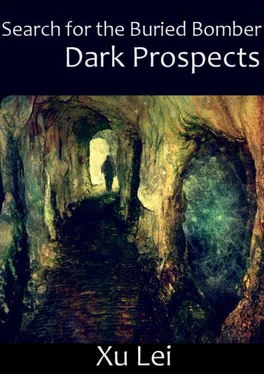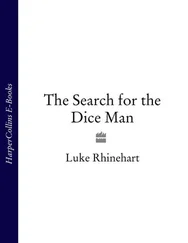As the oath ended, each of us was filled with his own thoughts. Then the colonel extinguished the lantern and someone at the back of the room started the projector. As it began running, I realized how ignorant I really was—this would be no slide show. That little machine was a film projector. We’d only watched movies on huge screens with correspondingly large projectors. We were all very curious about this miniature version. The colonel, however, gestured sternly for us to stop jabbering.
Ten minutes into the film, I felt my whole body stiffen. I understood that the severity with which we had been instructed to conceal this information was far from just talk. The movie we were being shown was one whose contents should absolutely never be revealed—a “Zero Film.”

CHAPTER 3

The Zero Film
Zero Film was a code name born in the winter of 1959 at the Harbin Film Studio. They were producing a movie documenting the early exploration of the Daqing oil field: its location, development, the infrastructure and manpower assembled for the project. The film was shown only to the highest echelon of Chinese Communist Party Central Committee members. From then on, the term Zero Film came to denote a movie that could be shown only to the top brass. No one knows what happened to all the Zero Films. An old prospector once told me the films were most likely destroyed. Just one more of the countless incomprehensible acts committed during the Cultural Revolution.
The clip we watched appeared to be a portion of a longer movie. The events unfolded slowly—government movies of the time were always preoccupied with every minute bureaucratic step—but as the grainy images flickered against the curtains, the purpose of our transfer to this remote place became clear.
In the winter of 1959, while fighting a forest fire in the southern foothills of the Greater Khingan range, a lumberjack discovered the wreckage of a Japanese transport plane sunk in a muddy bog. The heat from the fire had already evaporated much of the water. As the bog shriveled, the snapped wing of an aircraft was revealed. The lumberjacks on the scene climbed into the wreckage and began pulling out spare parts and components. The parts passed through many hands, from the cadre leader at the local lumber mill, to an associate of his at the county level, until finally, they were seen by a retired military officer. He immediately reported up the chain of command and news of the incident reached the highest levels.
In those days, Party leaders took discoveries of leftover weapons and military equipment very seriously. They were useful for research, and a plane like that would probably still contain some antipersonnel bombs. The Central Committee immediately dispatched a team to investigate the wreck. After digging the plane out of the pit, the team searched the still-intact cabin. They were shocked to discover the plane had been transporting only one thing: Japanese army documents regarding the geological exploration of Manchuria and Mongolia.
It’s common knowledge that after occupying the Northeast, Japan expended a great deal of effort searching for mineral deposits, the most pressing being oil. However—and it’s not clear why exactly this was—the Japanese did not drill very deeply. So no matter how much they searched, they failed to find even the hint of a deposit. Japanese prospecting teams even explored just above the ore beds in Daqing. Japan thus decided that China was an oilpoor country, and it wasn’t until Huang Jiqing discovered the oil reserves at Daqing that this opinion was reversed. (In fact, prior to the Japanese occupation, prospectors from the United States also searched for and failed to find oil in China. That so many capable countries were unable to find China’s oil, one can’t help but find a little strange.)
Nonetheless, the foundational prospecting work that Japan did in the Northeast was exceedingly precise. When the Soviet Union’s Red Army attacked the Japanese, our spies went to any lengths to locate the information the Japanese had compiled. We failed. The documents had vanished without a trace. We Chinese believed they’d been seized by the Soviet Union. The Soviet Union believed the Japanese had burned them. The Japanese believed surrendered Japanese soldiers had disclosed the information to their Chinese captors. No one could have guessed that they’d been lying at the bottom of a swamp for almost twenty years.
This was precious data and was later used as essential reference material for large-scale, low-depth mineral-prospecting work at several locations across Inner Mongolia. The documents showed how scrupulously the Japanese had handled their affairs: all the materials were immaculate—hand copied with no errors—and divided into various leather chests, with different types of information placed into different-colored containers. Later, after being delivered to the classified-information branch of the Beijing Archives, the documents were rigorously analyzed and sorted. Because all the documents were in Japanese and included a great deal of numerical data, teasing out their secrets required translators and prospectors to work together. The process of arranging this information was slow and arduous, but in the middle of it, a peculiar outlier was uncovered. An archivist discovered a locked black steel case at the bottom of one of the leather chests.
This little steel case was totally inconspicuous—seemingly left by accident at the bottom of the chest—but it was sealed with a code lock of great precision. Obviously it had been designed for military secrets. What could be inside? Its existence aroused great interest in the Party leaders. Experts were consulted and tremendous effort was expended before locksmiths finally broke through the lock. Inside was what appeared to be another geological-exploration document, but one written entirely in code.
Those present at the time were all bewildered by this discovery. Why had this document in particular been specially coded and concealed? The Central Committee suspected it contained clues to the oil fields the Japanese had been searching for, but the Japanese were highly skilled code writers and, at the time, there was no way to decipher the document’s meaning. The United States had information on Japanese codes, but the Korean War had only ended a few years previously. You couldn’t just call up the Americans and ask to borrow their books for a quick look-see. All we could figure out was the location and scope of the prospecting area that the document seemed to refer to.
The 723 Project and the special organization in charge here were created on the basis of this information. Three prospecting teams were selected and sent into the thick forests of Inner Mongolia to hunt for clues to the document’s meaning. The discovery of this temporary Japanese base hidden deep among the trees confirmed everyone’s suspicions, but the camp was already long abandoned and everything burned away. Not even a single scrap of paper remained. It was only through locating traces of former activity in the surrounding area that we could tell the Japanese did in fact have a prospecting team here, and that they had engaged in comprehensive carpet-style prospecting on 80 percent of the nearby forest and mountain regions. Our teams began a general survey of the vicinity, but to no effect—nothing could be discerned from looking at the earth’s surface. Shallow excavations were then made, but again there was nothing to find. The area was completely lacking in any of the characteristics that normally merit geological exploration.
Читать дальше














